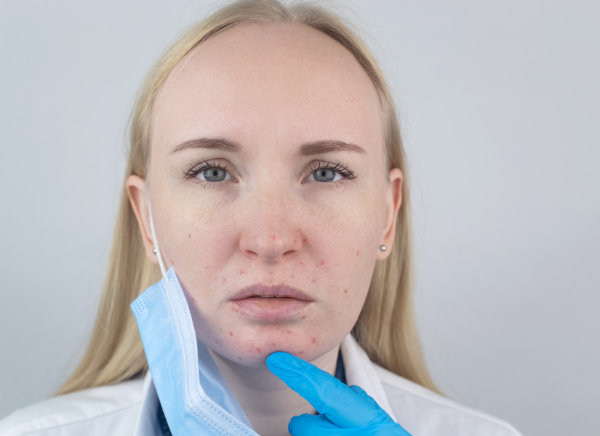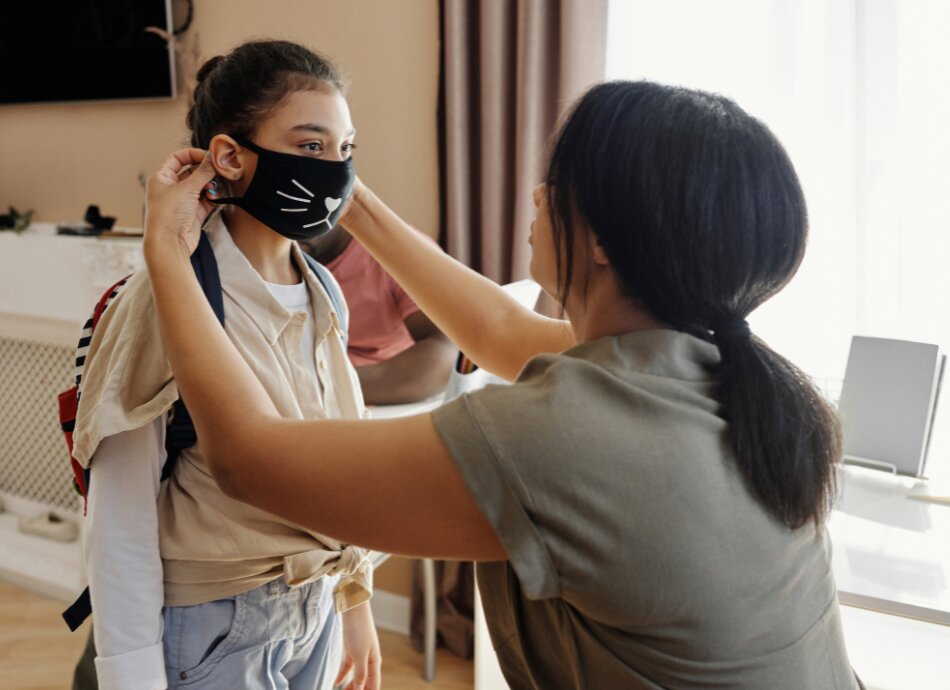Many people are experiencing redness, spots and a worsening of acne symptoms due to wearing a face mask or covering (sometimes called ‘maskne’). Maskne tends to occur around your mouth and nose area but can also affect your jawline.
Masks create a warm and humid environment underneath them that traps moisture and sebum. This can make pre-existing acne worse or cause new breakouts by clogging pores. These pores become inflamed leading to the classical red tender acne lesion.

Image credit: Canva
Tips to help prevent maskne
- Clean your skin carefully with a mild cleanser twice a day and, in particular, after you take your mask off when you get home. But it's also important not to over-cleanse, as this can cause dry skin. Your skin's natural reaction to drying out is to create more oil, which can make acne worse.
- Use non-comedogenic products to reduce the likelihood of pores getting blocked. ‘Non-comedogenic’ means the product is not likely to cause pore blockages (comedones). Face washes, make-up, moisturisers and other cosmetic products should say if they are non-comedogenic on their packaging.
- Avoid wearing makeup or oil-containing products under your mask as this can make acne worse.
- You may find switching to a mask that is made from a more breathable material helpful in managing breakouts. Materials that create excess humidity and warmth underneath them are likely to make spots worse. Masks made of natural fibres are often better but need to be washed on a regular basis to remove built-up oil, dead skin cells and bacteria.
- There is also a range of acne treatments to help with spots that can be bought from your pharmacy without a prescription. Ingredients to look for in acne-fighting products are salicylic acid and benzyl peroxide. Avoid oil-containing ingredients which can frequently make acne worse.
Read more about acne and how to treat it.






